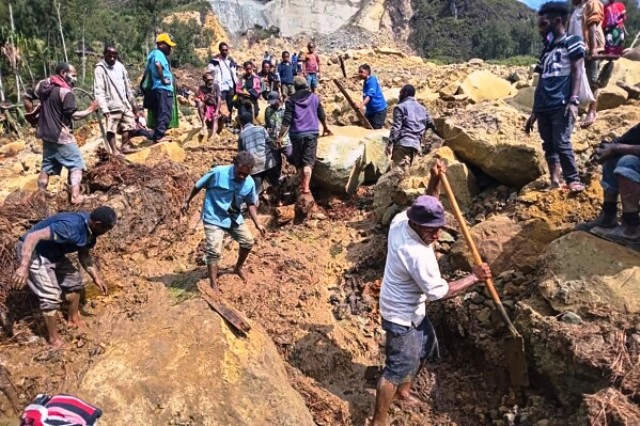As many as 2000 people are feared to have been buried by the massive landslide that occurred in the mountainous Enga region in northern Papua New Guinea on Friday, cited the country’s National Disaster Centre. The rescuers have been struggling to find any survivors in the remote region.
Earlier the UN revised the victims count to 670 from its prior figure 100. The latest figure is a sharp rise from earlier estimates.
“The landslide buried more than 2000 people alive, caused major destruction to buildings, and food gardens and caused a major impact on the economic lifeline of the country,” Lusete Laso Mana, Acting Director of the National Disaster Centre, said in a letter to the UN.
According to Mana, the current situation remains unsafe as the landslip continues to shift slowly, posing a life-threatening condition for both survivors and rescue teams. The highway to the area has been completely blocked by the landslide, causing extensive damage. Mana emphasised the need for immediate and collaborative actions from all involved parties.
The landslide hit the remote village of Kaokalam, about 600 kilometres (372 miles) northwest of the capital Port Moresby, at approximately 3 am local time on Friday, leaving a scar of debris that humanitarian workers said was as big as four football pitches. Over 150 houses in Yambali village were buried in debris, according to the officials.
Notably, Papua New Guinea is home to around 10 million people. Its vast mountainous terrain and lack of roads have made it difficult to access the affected area.
Pierre Rognon, an associate professor at the University of Sydney’s School of Civil Engineering, expressed that landslides have the potential to entomb both collapsed structures and individuals under a significant amount of geomaterials. He further added that these landslides can displace structures and entrap people across extensive distances. The exact location of potential survivors or the decide the initial point to start a search for them is nearly impossible.
Alan Collins, a Geology professor from the University of Adelaide, suggested that rainfall could have modified the minerals, thereby weakening the bedrock that constitutes the steep hillsides. He emphasised the role of vegetation in mitigating this as the roots of trees can stabilise the ground. He also pointed out that deforestation could increase the likelihood of landslides by destroying this natural mesh.

